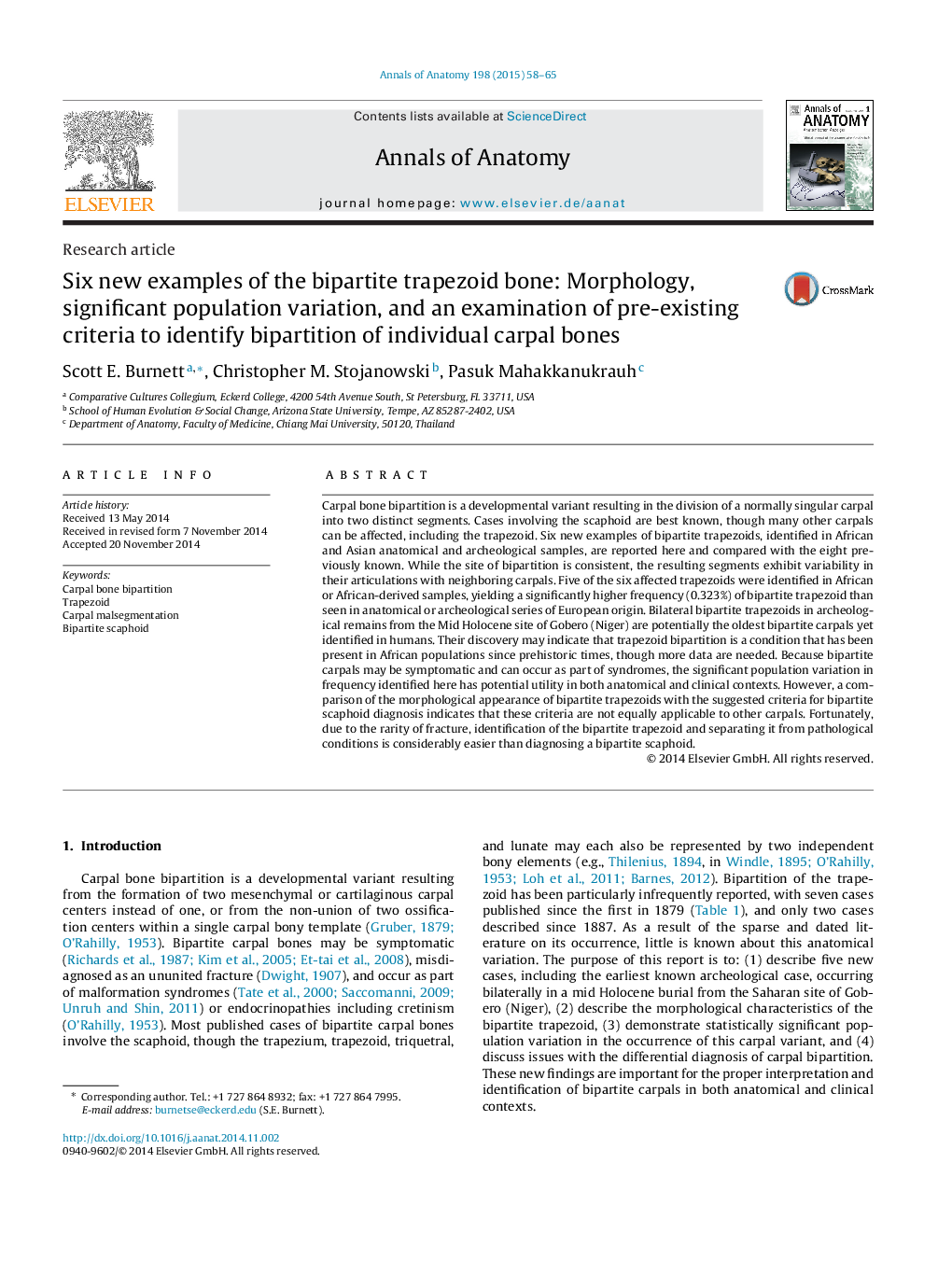| Article ID | Journal | Published Year | Pages | File Type |
|---|---|---|---|---|
| 8461012 | Annals of Anatomy - Anatomischer Anzeiger | 2015 | 8 Pages |
Abstract
Carpal bone bipartition is a developmental variant resulting in the division of a normally singular carpal into two distinct segments. Cases involving the scaphoid are best known, though many other carpals can be affected, including the trapezoid. Six new examples of bipartite trapezoids, identified in African and Asian anatomical and archeological samples, are reported here and compared with the eight previously known. While the site of bipartition is consistent, the resulting segments exhibit variability in their articulations with neighboring carpals. Five of the six affected trapezoids were identified in African or African-derived samples, yielding a significantly higher frequency (0.323%) of bipartite trapezoid than seen in anatomical or archeological series of European origin. Bilateral bipartite trapezoids in archeological remains from the Mid Holocene site of Gobero (Niger) are potentially the oldest bipartite carpals yet identified in humans. Their discovery may indicate that trapezoid bipartition is a condition that has been present in African populations since prehistoric times, though more data are needed. Because bipartite carpals may be symptomatic and can occur as part of syndromes, the significant population variation in frequency identified here has potential utility in both anatomical and clinical contexts. However, a comparison of the morphological appearance of bipartite trapezoids with the suggested criteria for bipartite scaphoid diagnosis indicates that these criteria are not equally applicable to other carpals. Fortunately, due to the rarity of fracture, identification of the bipartite trapezoid and separating it from pathological conditions is considerably easier than diagnosing a bipartite scaphoid.
Keywords
Related Topics
Life Sciences
Biochemistry, Genetics and Molecular Biology
Cell Biology
Authors
Scott E. Burnett, Christopher M. Stojanowski, Pasuk Mahakkanukrauh,
